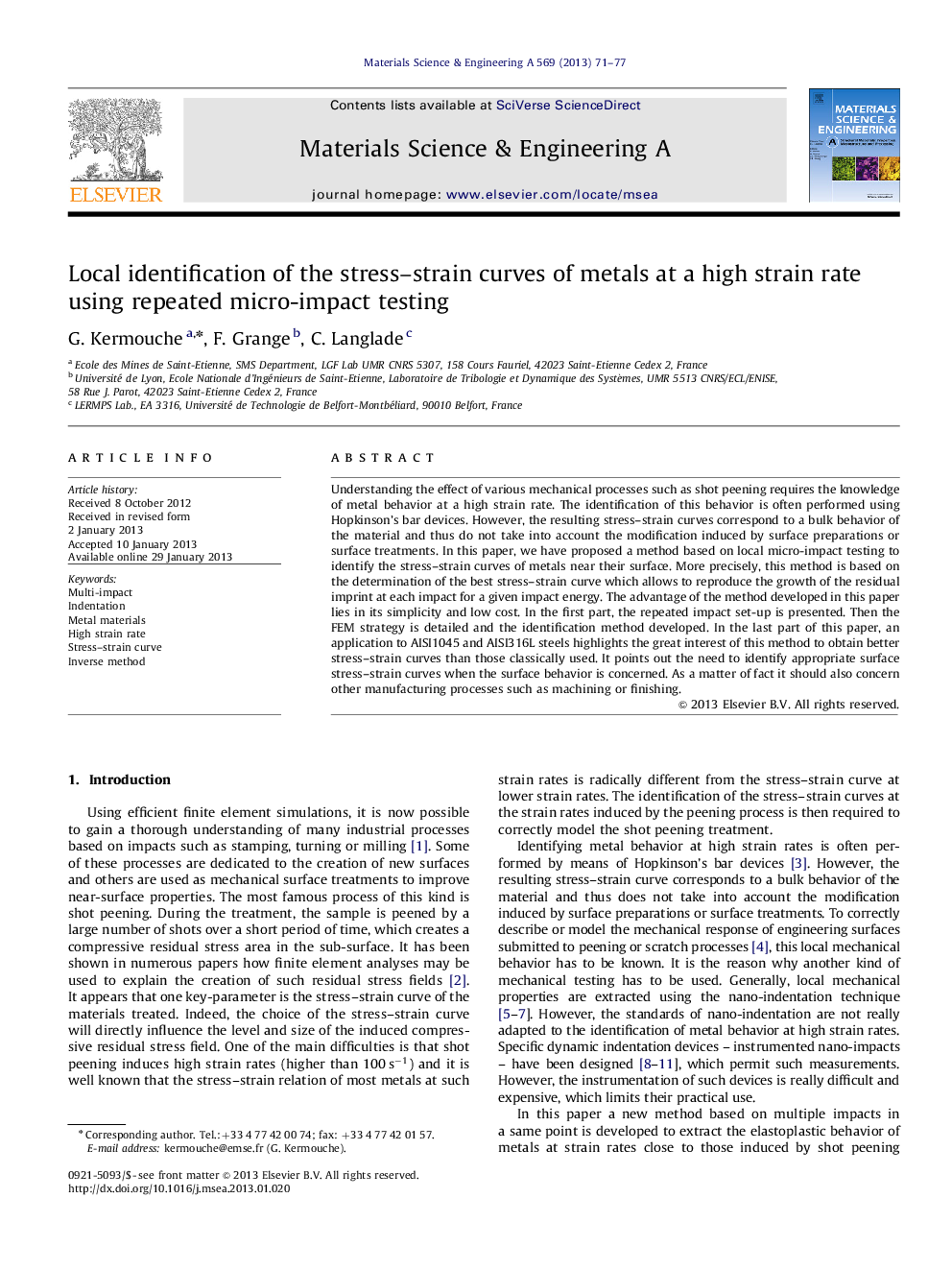| Article ID | Journal | Published Year | Pages | File Type |
|---|---|---|---|---|
| 1576355 | Materials Science and Engineering: A | 2013 | 7 Pages |
Abstract
Understanding the effect of various mechanical processes such as shot peening requires the knowledge of metal behavior at a high strain rate. The identification of this behavior is often performed using Hopkinson's bar devices. However, the resulting stress-strain curves correspond to a bulk behavior of the material and thus do not take into account the modification induced by surface preparations or surface treatments. In this paper, we have proposed a method based on local micro-impact testing to identify the stress-strain curves of metals near their surface. More precisely, this method is based on the determination of the best stress-strain curve which allows to reproduce the growth of the residual imprint at each impact for a given impact energy. The advantage of the method developed in this paper lies in its simplicity and low cost. In the first part, the repeated impact set-up is presented. Then the FEM strategy is detailed and the identification method developed. In the last part of this paper, an application to AISI1045 and AISI316L steels highlights the great interest of this method to obtain better stress-strain curves than those classically used. It points out the need to identify appropriate surface stress-strain curves when the surface behavior is concerned. As a matter of fact it should also concern other manufacturing processes such as machining or finishing.
Related Topics
Physical Sciences and Engineering
Materials Science
Materials Science (General)
Authors
G. Kermouche, F. Grange, C. Langlade,
